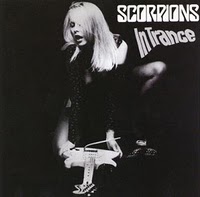 Three albums in and Scorpions are settling into an eccentric, decidedly European mix of piercing Teutonic fury and abject gothic balladry that would hallmark future Uli-era triumphs Virgin Killer and Taken by Force. In Trance features only a handful of hard rockers, but the manic, psyche-searing opener “Dark Lady” (featuring oddly appropriate lead vocals by Roth), tightly-clenched stomp of “Top of the Bill,” and weird, lost in translation “Robot Man” are all stinging entries, while “Longing for Fire” stands out as an unusual, brightly melodic moment. But it’s those troubled, moonlit strolls into balladry that really define the dark undercurrent of In Trance, with the mesmerizing title track, black veiled “Living and Dying,” and thunderous declarations “Evening Wind” and “Life’s Like a River” cementing the album under waves of isolation and melancholia. Only the lumbering blues “Sun in my Hand” hints at a loss of plot, one of Roth’s weirder Hendrix tributes that’s at least partially redeemed in his floating, Floydian instrumental “Night Lights” that closes the album. –Ben
Three albums in and Scorpions are settling into an eccentric, decidedly European mix of piercing Teutonic fury and abject gothic balladry that would hallmark future Uli-era triumphs Virgin Killer and Taken by Force. In Trance features only a handful of hard rockers, but the manic, psyche-searing opener “Dark Lady” (featuring oddly appropriate lead vocals by Roth), tightly-clenched stomp of “Top of the Bill,” and weird, lost in translation “Robot Man” are all stinging entries, while “Longing for Fire” stands out as an unusual, brightly melodic moment. But it’s those troubled, moonlit strolls into balladry that really define the dark undercurrent of In Trance, with the mesmerizing title track, black veiled “Living and Dying,” and thunderous declarations “Evening Wind” and “Life’s Like a River” cementing the album under waves of isolation and melancholia. Only the lumbering blues “Sun in my Hand” hints at a loss of plot, one of Roth’s weirder Hendrix tributes that’s at least partially redeemed in his floating, Floydian instrumental “Night Lights” that closes the album. –Ben
Heavy Metal
Thin Lizzy “Fighting” (1975)
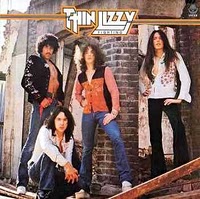 My favourite Thin Lizzy album. Which puts me in a minority, for sure, but I shouldn’t have to defend my assertion that this is hookier than Jailbreak (even if it doesn’t reach that one’s highest heights), more consistent than Johnny the Fox, and retains the sleazy feel that’s more or less buffed away from the overly polished Bad Reputation. This is their most underrated album by far. All the elements of the sound for which they’re best known (twin guitar attack, tense aggression, funky basslines, soulful melodicism and lyricism, etc., pick your cliché) are here in the freshest form; none of the cold metal posturing has crept in; and just about every song has an excitement that’s infectious and totally addictive, especially “Rosalie,” which is rock ‘n’ roll manna. –Will
My favourite Thin Lizzy album. Which puts me in a minority, for sure, but I shouldn’t have to defend my assertion that this is hookier than Jailbreak (even if it doesn’t reach that one’s highest heights), more consistent than Johnny the Fox, and retains the sleazy feel that’s more or less buffed away from the overly polished Bad Reputation. This is their most underrated album by far. All the elements of the sound for which they’re best known (twin guitar attack, tense aggression, funky basslines, soulful melodicism and lyricism, etc., pick your cliché) are here in the freshest form; none of the cold metal posturing has crept in; and just about every song has an excitement that’s infectious and totally addictive, especially “Rosalie,” which is rock ‘n’ roll manna. –Will
UFO “Phenomenon” (1974)
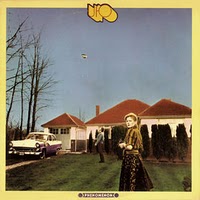 A good example of a band that didn’t achieve the success that matched the quality of their talent, would be, without a doubt, UFO. All of the ingredients were present, a guitar hero (Michael Schenker), a unique vocalist (Phil Mogg), a solid rhythm section, the power pop sensibilities of Cheap Trick and monster Sabbath riffs. Really, what more could a mid-seventies rock band need to be arena rock monsters. Their failure to appeal to the masses is a bit of a head-scratchier? Then again, as a teenager, I myself, considered them to be a B-level act. At the time, I wasn’t interested in subtleties, I was interested in rocking…hard. For some reason, diversity was alright for Led Zeppelin, but not for many others. It had to be loud, aggressive or progressive to cut through the hormonal fueled muck that was my sixteen year old brain. Still, somewhere in my self conscious, Phenomenon made an impression which led me to rediscover a hidden gem of an album and in turn, helped me rediscover UFO, All those years ago, my primitive mind could only wrap itself around “Rock Bottom” and “Doctor Doctor”. At the time, I considered these two, they only songs worth listening to on the entire album. The former built on a turbo charged upbeat intro riff, a half-time tempo shift and a classic seventies extended solo break in which Schenker pulls out all stops. The later was highlighted by tasteful fills and a bouncing shuffle beat, but what made these tracks stand out, was that they were the heaviest songs on this record. And HEAVY mattered more then anything. Now, older and wiser, I realize the album didn’t come close to ending there. “Too Young To Know” and “Oh My” are straight ahead root rockers, with earthy grooves and blues hooks the Stones made a somewhat nice living on. “Time on My Hands”, “Space Child” and “Crystal Light” are folkie ballads with stick-in-your-head melodies and unexpected twists. “Space Child” in particular, stands out with its’ loose structure and gripping solo. Less successful are “Built for Comfort”, which is a poor mans “Lemon Song”, and “Queen of the Deep”, which somewhat boldly meshes the folkie-UFO with the big riff-UFO, but misfires a bit in the attempt and fades just when it starts building momentum. The only real clunker is “Lipstick Traces”, which is basically just clichéd seventies filler. Believe me, these are small complaints. All in all, Phenomenon is not a Zeppelin album, but it would fit nicely in the same disc changer. –Rat Salad
A good example of a band that didn’t achieve the success that matched the quality of their talent, would be, without a doubt, UFO. All of the ingredients were present, a guitar hero (Michael Schenker), a unique vocalist (Phil Mogg), a solid rhythm section, the power pop sensibilities of Cheap Trick and monster Sabbath riffs. Really, what more could a mid-seventies rock band need to be arena rock monsters. Their failure to appeal to the masses is a bit of a head-scratchier? Then again, as a teenager, I myself, considered them to be a B-level act. At the time, I wasn’t interested in subtleties, I was interested in rocking…hard. For some reason, diversity was alright for Led Zeppelin, but not for many others. It had to be loud, aggressive or progressive to cut through the hormonal fueled muck that was my sixteen year old brain. Still, somewhere in my self conscious, Phenomenon made an impression which led me to rediscover a hidden gem of an album and in turn, helped me rediscover UFO, All those years ago, my primitive mind could only wrap itself around “Rock Bottom” and “Doctor Doctor”. At the time, I considered these two, they only songs worth listening to on the entire album. The former built on a turbo charged upbeat intro riff, a half-time tempo shift and a classic seventies extended solo break in which Schenker pulls out all stops. The later was highlighted by tasteful fills and a bouncing shuffle beat, but what made these tracks stand out, was that they were the heaviest songs on this record. And HEAVY mattered more then anything. Now, older and wiser, I realize the album didn’t come close to ending there. “Too Young To Know” and “Oh My” are straight ahead root rockers, with earthy grooves and blues hooks the Stones made a somewhat nice living on. “Time on My Hands”, “Space Child” and “Crystal Light” are folkie ballads with stick-in-your-head melodies and unexpected twists. “Space Child” in particular, stands out with its’ loose structure and gripping solo. Less successful are “Built for Comfort”, which is a poor mans “Lemon Song”, and “Queen of the Deep”, which somewhat boldly meshes the folkie-UFO with the big riff-UFO, but misfires a bit in the attempt and fades just when it starts building momentum. The only real clunker is “Lipstick Traces”, which is basically just clichéd seventies filler. Believe me, these are small complaints. All in all, Phenomenon is not a Zeppelin album, but it would fit nicely in the same disc changer. –Rat Salad
Armageddon “Armageddon” (1975)
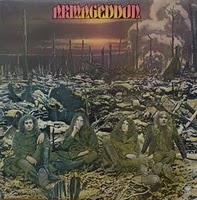 Shaggy proto-metal stretched and contorted into long winded, progressive forms, second tier supergroup Armageddon recall the similarly assembled Captain Beyond in both form and execution, both bands in fact sharing a member in drummer Bobby Caldwell. Ex-Yardbirds and Renaissance vocalist Keith Relf fronts the group, while Steamhammer’s Martin Pugh lays down piercing, wah-washed guitar on the circling “Buzzard,” slashes and burns through the frantic “Paths and Planes and Future Gains,” and works a heavy funk riff ala Zeppelin and Budgie on “Last Stand Before.” Elsewhere there’s the glassy tones of the ethereal “Silver Tightrope,” and the album concludes with a rambiling, multi-part suite in “Basking in the White of the Midnight Sun.” An impressive, semi-obscure heavy gem that any fan of bludgeoning bell-bottom rock should enjoy surrendering to. –Ben
Shaggy proto-metal stretched and contorted into long winded, progressive forms, second tier supergroup Armageddon recall the similarly assembled Captain Beyond in both form and execution, both bands in fact sharing a member in drummer Bobby Caldwell. Ex-Yardbirds and Renaissance vocalist Keith Relf fronts the group, while Steamhammer’s Martin Pugh lays down piercing, wah-washed guitar on the circling “Buzzard,” slashes and burns through the frantic “Paths and Planes and Future Gains,” and works a heavy funk riff ala Zeppelin and Budgie on “Last Stand Before.” Elsewhere there’s the glassy tones of the ethereal “Silver Tightrope,” and the album concludes with a rambiling, multi-part suite in “Basking in the White of the Midnight Sun.” An impressive, semi-obscure heavy gem that any fan of bludgeoning bell-bottom rock should enjoy surrendering to. –Ben
Black Sabbath “Master of Reality” (1971)
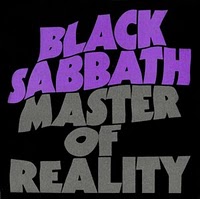 The beautiful thing thing about the first few Black Sabbath records is that, although they’re the heaviest, darkest, and most extreme representations of electric guitar driven music at that time, it’s the kind of thing a five year old could get down to at first listen. Their undeniably satisfying grooves, hooks, and drive leave them sounding as easily digestible as Creedence Clearwater Revival, only dipped in wax and plugged through a marshall stack in the dark. Master Of Reality, Sabbath’s third testament, is probably their darkest. From the black haze of a cover and heaviest album title of all time, to guitar tone that sounds like the amps took bong rips, the record has enough vibe to spook a horse. The songs are laid back and seem to exercise groove endurance, giving the effect of psychedelia through hypnotism. Juxtaposing the fuzz are two short mellow instrumentals and the angelic “solitude,” which sounds like a candle glowing under the ocean. Art of the highest order and accessible to all walks. if you haven’t yet gotten down, I suggest getting down immediately. -Alex
The beautiful thing thing about the first few Black Sabbath records is that, although they’re the heaviest, darkest, and most extreme representations of electric guitar driven music at that time, it’s the kind of thing a five year old could get down to at first listen. Their undeniably satisfying grooves, hooks, and drive leave them sounding as easily digestible as Creedence Clearwater Revival, only dipped in wax and plugged through a marshall stack in the dark. Master Of Reality, Sabbath’s third testament, is probably their darkest. From the black haze of a cover and heaviest album title of all time, to guitar tone that sounds like the amps took bong rips, the record has enough vibe to spook a horse. The songs are laid back and seem to exercise groove endurance, giving the effect of psychedelia through hypnotism. Juxtaposing the fuzz are two short mellow instrumentals and the angelic “solitude,” which sounds like a candle glowing under the ocean. Art of the highest order and accessible to all walks. if you haven’t yet gotten down, I suggest getting down immediately. -Alex
Blue Öyster Cult “Blue Öyster Cult” (1972)
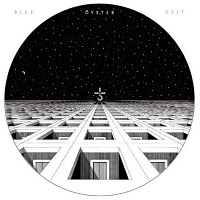 Long before the mega-hits “Godzilla” and “(Dont Fear) The Reaper” roamed FM radio waves there lived a different kind of creature: “Blue Öyster Cult” the album. Everything about BÖC is unique: from their mysterious name, the umlaut over the Ö and the famous hook and cross logo to the cryptic lyrics and their instantly recognizable sound. Nowhere is their uniqueness more apparent than on this classic self-titled debut. The music lies somewhere between psychedelia and heavy metal and the cover features black and white op-art that perfectly captures the sci-fi and horror themes inside. My favorite tracks are the classic “Cities on Flame with Rock and Roll,” the tripped out “Screams,” the even trippier “She’s as Beautiful as a Foot” and the country-rock of “Redeemed” with it’s beautiful harmonies. All I can say is: “More Cowbell!” –David
Long before the mega-hits “Godzilla” and “(Dont Fear) The Reaper” roamed FM radio waves there lived a different kind of creature: “Blue Öyster Cult” the album. Everything about BÖC is unique: from their mysterious name, the umlaut over the Ö and the famous hook and cross logo to the cryptic lyrics and their instantly recognizable sound. Nowhere is their uniqueness more apparent than on this classic self-titled debut. The music lies somewhere between psychedelia and heavy metal and the cover features black and white op-art that perfectly captures the sci-fi and horror themes inside. My favorite tracks are the classic “Cities on Flame with Rock and Roll,” the tripped out “Screams,” the even trippier “She’s as Beautiful as a Foot” and the country-rock of “Redeemed” with it’s beautiful harmonies. All I can say is: “More Cowbell!” –David


